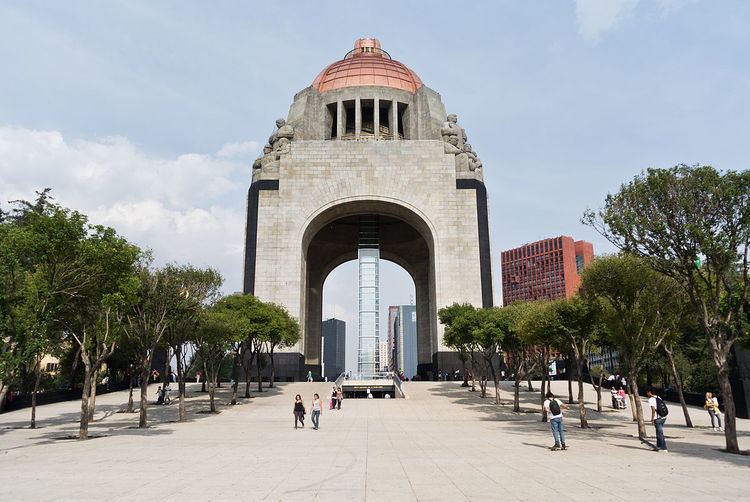Type Monument Opened 1938 Owner Public Space Auhority | Height 67 m Phone +52 55 5592 2038 | |
 | ||
Address Plaza de la República S/N, Tabacalera, Cuauhtémoc, 06030 Ciudad de México, CDMX, Mexico Similar Angel of Independence, Zócalo, Palacio de Bellas Artes - Me, Alameda Central, Historic center of Mexico City | ||
Monument to the revolution in mexico city monumento a la revoluci n en la ciudad de m xico
The Monument to the Revolution (Spanish: Monumento a la Revolución) is a landmark and monument commemorating the Mexican Revolution. It is located in Plaza de la República, which crosses at the heart of the major thoroughfares Paseo de la Reforma and Avenida de los Insurgentes in downtown Mexico City.
Contents
- Monument to the revolution in mexico city monumento a la revoluci n en la ciudad de m xico
- Elevador panor mico monumento a la revoluci n panoramic elevator monument to the revolution
- History
- References
Elevador panor mico monumento a la revoluci n panoramic elevator monument to the revolution
History
The building was initially planned as the Federal Legislative Palace during the regime of Porfirio Díaz and "was intended as the unequaled monument to Porfirian glory." Considered the tallest triumphal arch in the world, it stands 67 metres (220 ft) in height.
The project was planned 1897, and the government allocated 5 million pesos for it. Since the building was a major public project, there was a competition to design it, ultimately won by a Frenchman, Émile Bernard. The government's selection of a Frenchman as architect, who produced a neoclassical design with "characteristic touches of the French renaissance,", points to government officials' aim to demonstrate Mexico's rightful place as an advanced nation. Díaz laid the first stone in 1910 during the centennial celebrations of Independence, when Díaz also inaugurated the Monument to Mexican Independence ("The Angel"). Rather than local Mexican materials used in the stone façade, the design called for Italian marble and Norwegian granite.
Although the Díaz regime was ousted in May 1911, President Francisco I. Madero, "the Apostle of Democracy," continued the legislative building's construction until 1912, when the money ran out. The structure remained unfinished until 1938, and completed during the presidency of Lázaro Cárdenas. The open building was designed by Carlos Obregón Santacilia in an eclectic Art Deco and Mexican socialist realism style, over the existing cupola structure of the Palacio Legislativo Federal (Federal Legislative Palace). Oliverio Martínez designed a stone sculpture for the structure, with Francisco Zúñiga as one of his assistants.
The structure also functions as a mausoleum for the heroes of the Mexican Revolution of 1910, Francisco "Pancho" Villa, Francisco I. Madero, Plutarco Elías Calles, Venustiano Carranza, and Lázaro Cárdenas. Revolutionary general Emiliano Zapata is not buried in the monument, but in Cuautla, Morelos. The Zapata family has resisted the Mexican government's efforts to relocate Zapata's remains to the monument.
